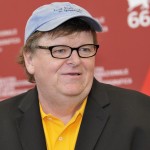
A long time ago (1977), in a galaxy far, far away, the “Star Wars” franchise was born. In more recent news, electronic dance music went mainstream.
Rick Rubin has recently produced an album called “Star Wars Headspace,” combining the most cutting-edge artists of electronic music with the playful lightsaber sounds of “Star Wars.”
Rubin, the co-founder of Def Jam Recordings and former co-president of Columbia Records, is arguably one of the most influential men in music — and the galaxy — today. The Han Solo of the music industry, Rubin uses his influence to turn EDM intergalactic.
John Williams has been the token “Star Wars” conductor and composer throughout the space opera’s saga. At the time, the music he created was unlike anything the general public had heard. The opening of the “Star Wars” soundtrack quickly became legendary and effortlessly engrained in popular culture.
Recently, “Star Wars” was revived with “Star Wars: Episode VII – The Force Awakens” hitting theaters in December 2015. Cashing in on the nostalgia, the film has made more than $2 billion at the box office.
The monumental popularity of the “Star Wars” revival sent shockwaves across the film industry. So why not pair it with a kindred up-and-coming movement — electronic music?
The similarities between “Star Wars” and EDM are immediately apparent. “Star Wars” was an innovation of its time, displaying sound, visuals and storytelling with pivotal technology. Electronic music similarly pushes boundaries, exploring the heights of technology in the music industry.
Rubin recruits Shlohmo, Flying Lotus, Baauer and many more as his sidekicks for the album. These are artists who no doubt grew up with the music of “Star Wars” as a yardstick of greatness.
With Rubin piloting the project, he proves himself to be the father of electronic music.
A different artist produces each song with his or her own take on the theme. But between the samples from the films and a general interest in keeping the distorted and robotic sounds, the album is relatively uniform.
Baauer’s “Cantina Boys” has the unmistakable grandiose and upbeat tempo that he has become known for and playfully mimics Williams’ orchestra. Claude VonStroke also brings his work to the battleground with his fist-pumping, Americanized house music in “R2 Knows” with a volume Chewbacca would be proud of.
Bonobo’s song, “Ghomrassen,” hits us with his predictably relaxing minimalist sounds that circulate and travel like the Millennium Flacon.
Similarly, Flying Lotus flies low, with his experimental mish-mash “R2 Where R U?” mixing sounds of our planet and beyond that fluctuate from birds to spaceships. If Flying Lotus was a “Star Wars” character, he would most certainly be Yoda.
However, it is GTA’s “Help Me!” that explores the dark side with an amusing sample of Darth Vader’s trademark muffled breathing.
Standing alone, each song — barring the actual references to Star Wars — could no doubt slip into each artist’s repertoire unnoticed. In other words, without the obvious pointing to the films, electronic music has a spaced-out, intergalactic feel all on its own.
“Star Wars Headspace” will only ever be a fun, lighthearted project. The album is a celebration of music and technology of the past, present and future. However, its gimmicky nature ensures that it won’t stand the test of time itself.
The nostalgic past of the “Star Wars” films paired with the future of electronic music makes us wonder — when will the time come that electronic music as we know it becomes passé?
“Star Wars” itself was once considered the height of futuristic film, but our generation looks upon it as an established-yet-fading classic much like our universe, where stars are born, burn bright and die while their light still illuminates our sky.
Give the album a listen, and may the present be with you.




